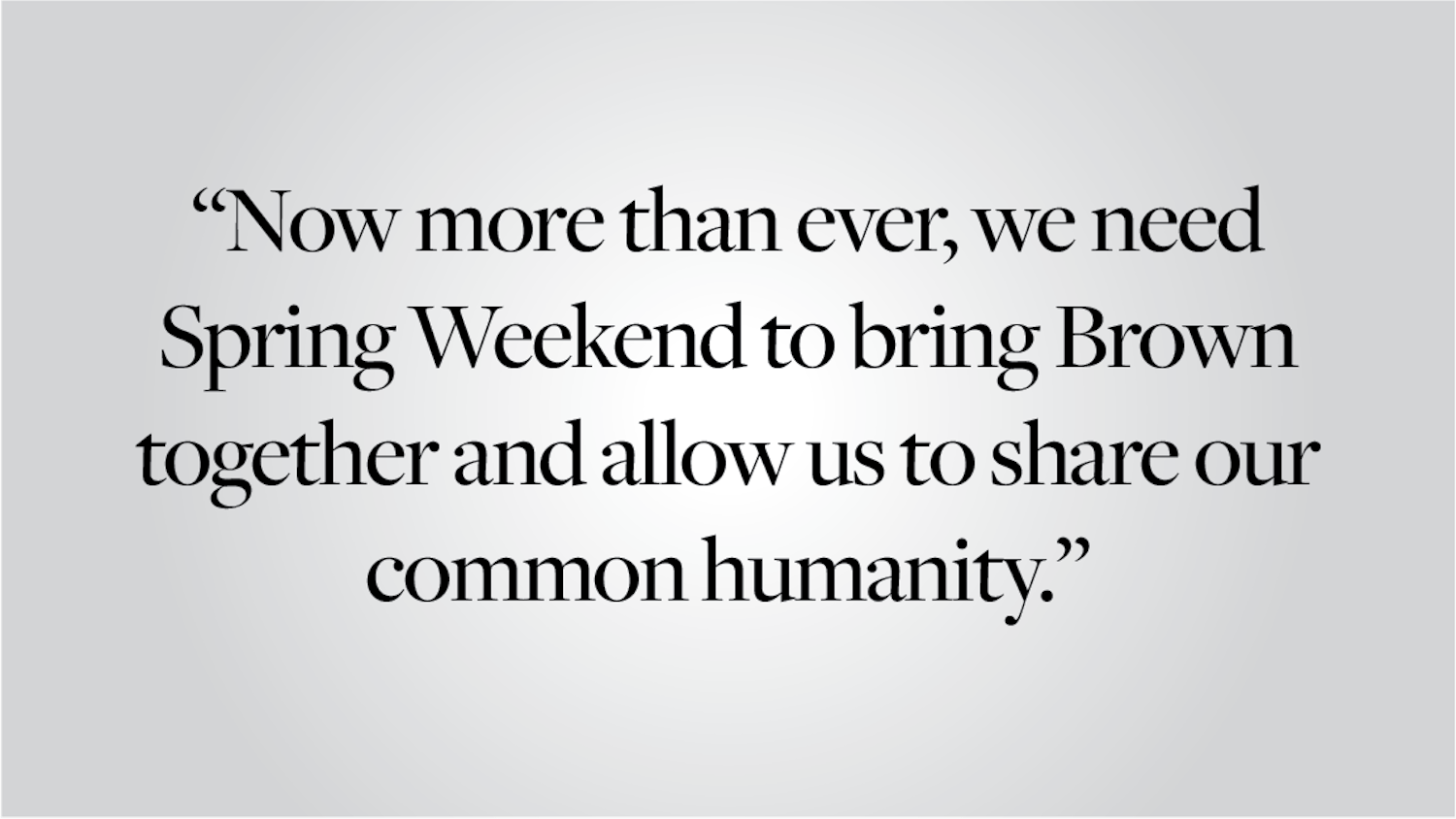Almost immediately after Brown’s budget for fiscal year 2018 was approved by the Corporation, many students reacted to the 4 percent tuition increase and the projected deficit of nearly $4.8 million. Tuition was compared negatively with the much lower inflation rate, and the deficit was seen by some as a sure sign of mismanagement.
As students, we should be skeptical of the budget. Brown’s ability to manage fiscal growth will affect not only future generations of students, but the relative value of our degrees long after we graduate. We must demand a budget that matches our priorities and sets a clear path forward.
It was with this exact skepticism that, in the spring of my sophomore year, I applied to join the University Resources Committee. The URC is a 25-person committee chaired by the provost that includes faculty members, staff members, administrators and students, including four undergraduates. I sat on the URC for two years and, along with my undergraduate peers, saw the creation of two annual budgets, including the FY18 budget. This budget, totaling $1.061 billion, funds the day-to-day operations of the University; it is separate from funds raised in the BrownTogether campaign and from funds used to construct new buildings.
The process of creating and approving a budget takes six months. The URC began our budget process last fall by educating ourselves on department operations — we learned about the costs associated with Brown, which totals approximately $100,000 per undergraduate, as well as the revenue sources that pay for these costs, including the endowment payout, sponsored research, donations and tuition.
As the budget cycle progresses, we inevitably come to the large decisions, among them tuition, the deficit and millions in budgetary increases requested by departments. None of these numbers are dictated to us by the Corporation, the president or any member of the administration. These are decisions that we — students, staff, administrators and faculty — make together.
The result of this process is that the URC simultaneously considers tuition increases, budget increases and potential deficits. As such, it is impossible not to equate the three — more budget increases mean a higher deficit, lower tuition means fewer budget increases, and so on. With these myriad options, how does the URC actually make the decisions that are so important to Brown?
Simply put, we return to our values. Many of these values are articulated well in Building on Distinction, including commitments to diversity, academic excellence and creative expression, while others emerge and evolve as new classes of students enter our campus.
As an undergraduate on the committee, it was my job and the job of my peers to ensure our meetings were full of student values and perspectives. To that end, the four-person undergraduate delegation met daily with student leaders, student groups, classmates and community members; these perspectives informed our decisions. Among the values represented in the two most recent budgets are:
— Equality: Through expansion of financial aid, Brown will continue to become more accessible and affordable for middle- and low-income families, and the elimination of the suite fee will ensure that no student must defer living with friends because they cannot afford it.
— Health: The URC added dental coverage for graduate students, while expanding the number of staff members in both Health Services and Counseling and Psychological Services.
— Diversity: This year’s budget includes $5.2 million to support the Diversity and Inclusion Action Plan, just as the FY17 budget proposed a “dean level” staff member who would ensure greater support for first-generation and low-income student populations.
These investments are accompanied by a tuition increase. Expanded services equal a higher sticker price, though continued expansion of financial aid will ensure that Brown continues to become more affordable for a large percentage of families. And while there is a modest deficit, the committee determined that these investments should not wait, and the URC has a clear path for eliminating the structural deficit in the years to come.
This value-based approach runs counter to two of the common myths I hear about tuition increases. The first is that tuition is raised due to some form of upper-level collusion among the educational elites. This is patently false: Brown’s tuition is set by our committee The second myth is that added revenue from tuition dollars is being funneled to a mysterious “other.” This narrative is particularly pernicious because it assumes a lack of goodwill among the committee members and seeks to stoke anger rather than understanding.
I am heartened when I see fellow students dismiss these false narratives. The values in the FY18 budget are not the result of cynicism or derision, but of near-constant activism among student populations — activism that champions equality, health and diversity as worthy ideals, and honest dialogue as the means to achieve these ends. In the coming months and years, there will be ample opportunity for this type of value-advocacy. Brown will face the same old questions of tuition and deficits, while also attempting to build alternative revenue streams, maintain an undergraduate focus and strengthen the value proposition of the University-college in our modern world. I look forward to the Brown community continuing this important dialogue as we chart our path forward together.
Christian Hanson ’17 can be reached at christian_hanson@brown.edu. Please send responses to this opinion to letters@browndailyherald.com and other op-eds to opinions@browndailyherald.com.




